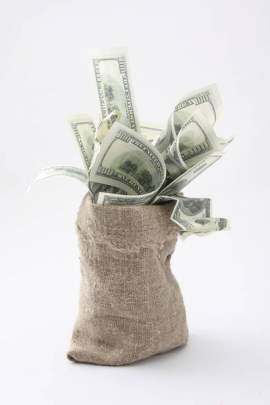
Bond Prices Explained

How is a Bond Valued?
Bond prices are determined through a stringent valuation process to calculate the “fair price” of a bond. As is common with any capital investment or security, the value in theory of a bond is the present value of the stream of cash flows that are expected to generate upon maturity. As a result the prices of the bond are obtained by discounting the bond’s expected return (or cash flow) to the present by using the appropriate discount rate. The discount rate, in practice, is typically determined by referencing the underlying bond to other similar instruments, provided that the instrument still exists and maintains a uniform formatting.
Bond prices also fluctuate based on the presence of embedded options within the bond. The valuation process in this formatting is more difficult and will combine option pricing with pure discounting. Depending on the type of option within the bond, the option price is either added to or subtracted from the price of the straight portion of the underling bond. Subsequently, this total is then the true value of the bond and the various yields of the bond can thus be calculated for the total bond price.
The fair bond price of a straight bond (bonds with no embedded option) is typically determined by discounting the expected cash flows at the coordinating discount rate. This present value relationship reflects the bond price in theory and the theoretical approach used to determine the bond prices. In practice bond prices are usually determined with reference to other, more liquid financial instruments. There are two predominant ways in which a bond can be evaluated and subsequently priced:
Relative Bond Price Approach:
Using this approach, a bond will be priced relative to a benchmark asset, typically a government security. Using this approach, the yield to maturity attached to the bond is determined based on the bond’s Credit rating (the likelihood that the bond will be paid back) compared to a government security with a similar maturity schedule. The higher the quality of the bond, the smaller the spread between its expected return and the yield to maturity benchmark. The expected return is subsequently used to discount the bond’s return to obtain bond prices.
Arbitrage-Free Pricing Model:
Using this approach, bond prices reflect the arbitrage-free price of the bond market. The cash flow (the face or coupon value) is separately discounted at the same rate as a zero-coupon bond with an equivalent credit score. In general, bond prices are evaluated under this method by applying rational pricing logic relating to assets with identical cash flows.
More specifically, the bond’s coupon dates and the amounts of the couple are known with certainty; therefore some fraction of a cero-coupon bond and each corresponding coupon date can be specified as to produce identical cash flows to the bond. As a result, the bond price presently must be equal to the sum of each of the cash flows, which are discounted at the rate implied by the value of corresponding zero coupon bond.
NEXT: Corporate Bonds





















